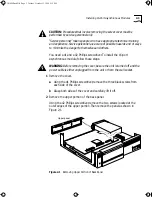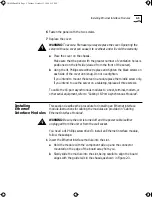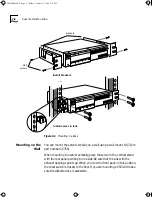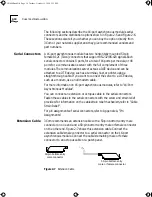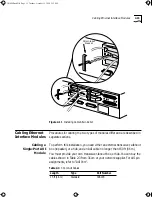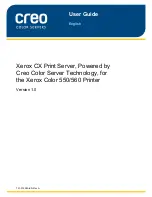
2-2
C
HAPTER
2: I
NSTALLATION
2
Verify that you have received all items on the packing list.
3
Inspect the server and modules for shipping damage.
If you find any damage, contact the shipping company to file a report. If
you must return the server or modules to your network supplier or 3Com,
ship them in their original shipping cartons and antistatic shielded bags. If
the original carton was damaged in shipment, repack the hardware in a
carton that provides equivalent protection.
4
Verify that the power specifications on the product identification label on
the back panel correspond to the available power source.
If the available power source is not within the acceptable range, contact
3Com or your network supplier.
5
Write down the Ethernet address, part number, and serial number listed on
the product identification label.
6
Collect the tools you need.
You need a #1 and a #2 Phillips screwdriver and a small slotted screwdriver.
7
Observe the following ESD guidelines when installing 16-port asynchronous
modules and Ethernet interface modules:
a
Do not touch pins, leads, or solder connections on the board.
b
Handle the board by the edges only.
c
Observe proper grounding techniques, including using a foot strap and
grounded mat or wearing a grounded static discharge wrist strap.
The warranty does not cover failures resulting from ESD.
Installing 16-Port
Asynchronous
Modules
This procedure assumes that your communications server has no 16-port
asynchronous modules installed, and you are installing the modules before
turning on your server power for the first time. Instructions for cabling the
modules are provided in “Cabling 16-Port Asynchronous Modules”. To
replace or add a 16-port asynchronous module to a server with the power
turned on, refer to Chapter 5, “Maintenance and Upgrades.”
CS3000BookFile Page 2 Tuesday, October 15, 1996 5:12 PM
















